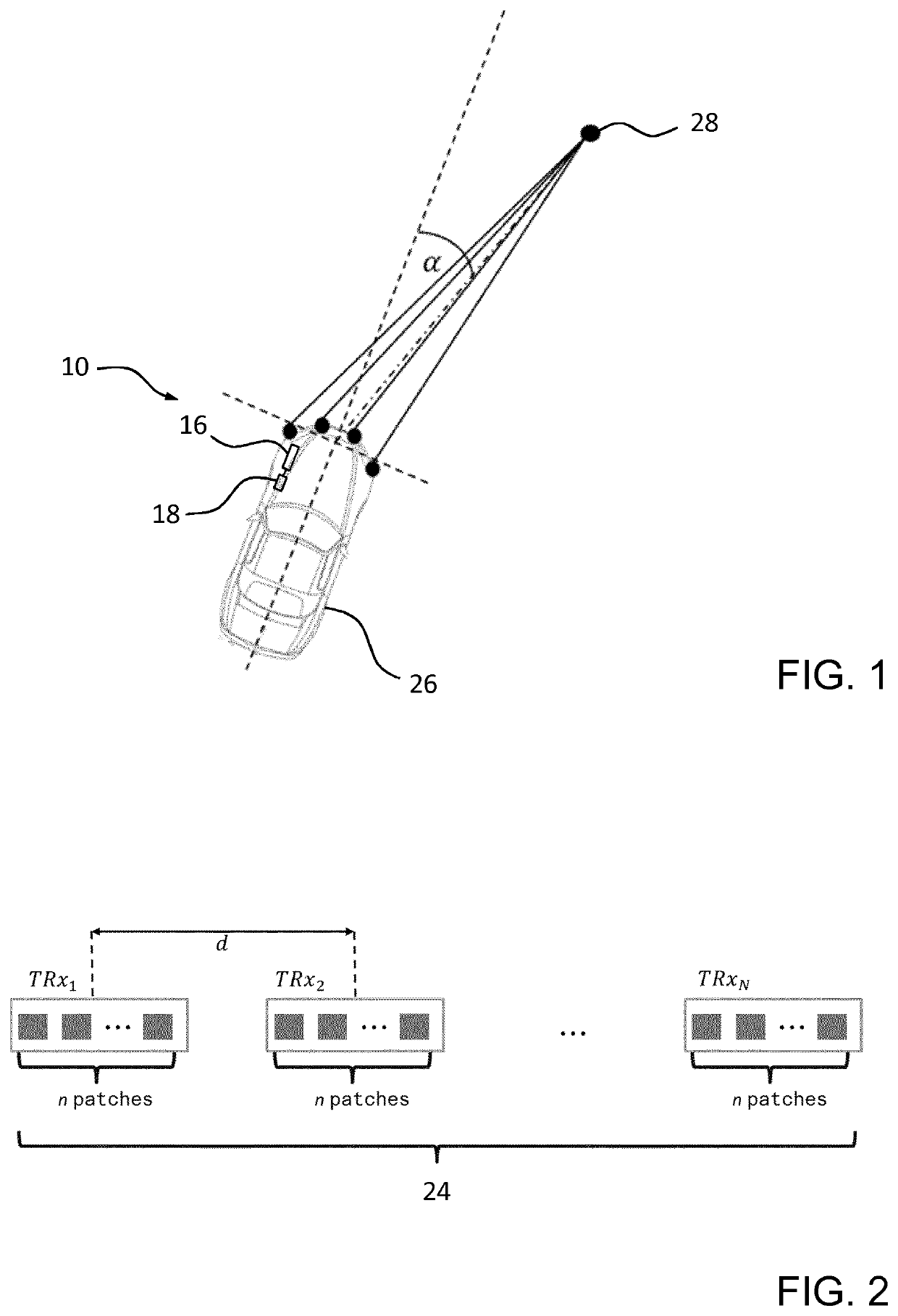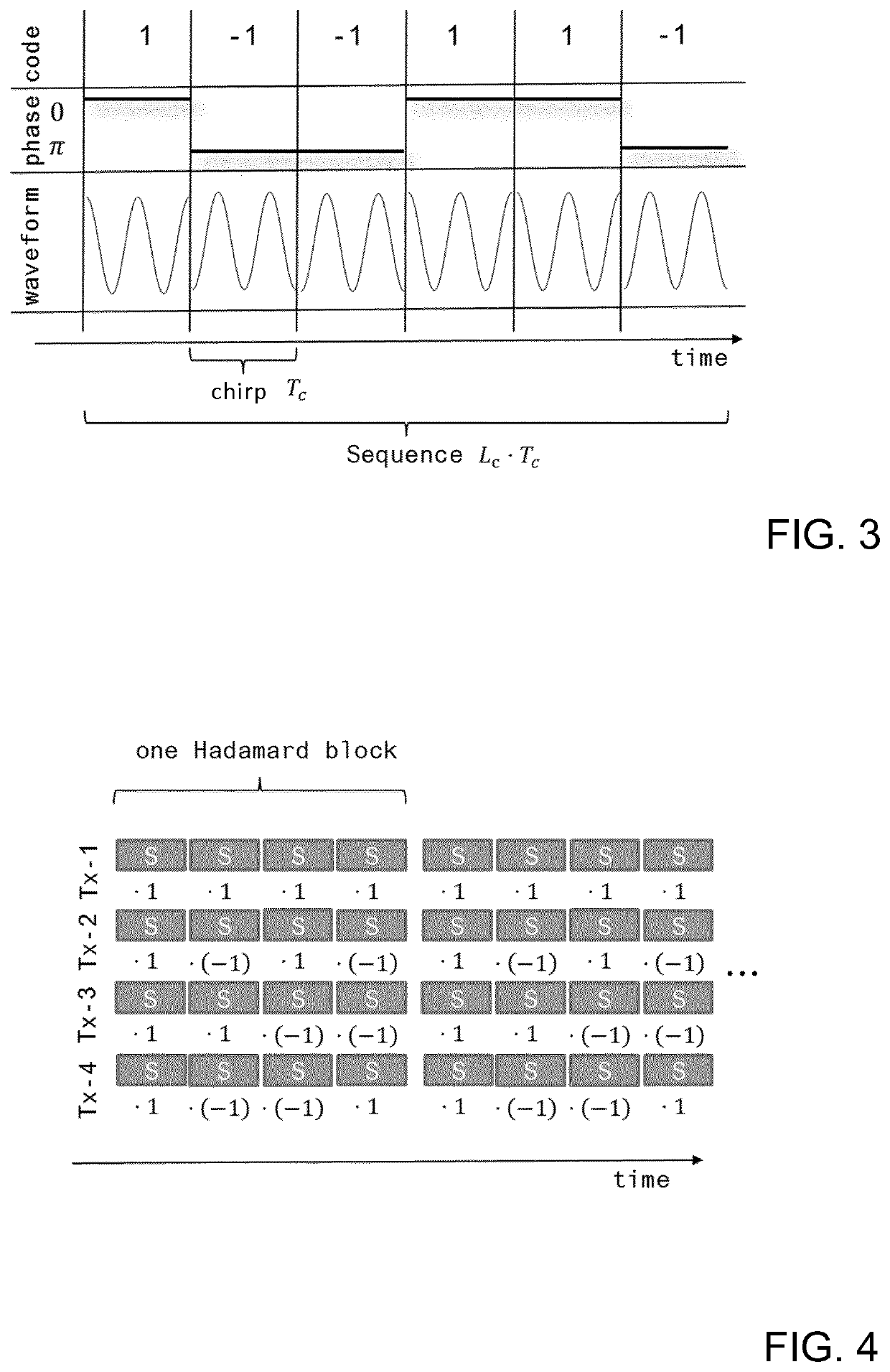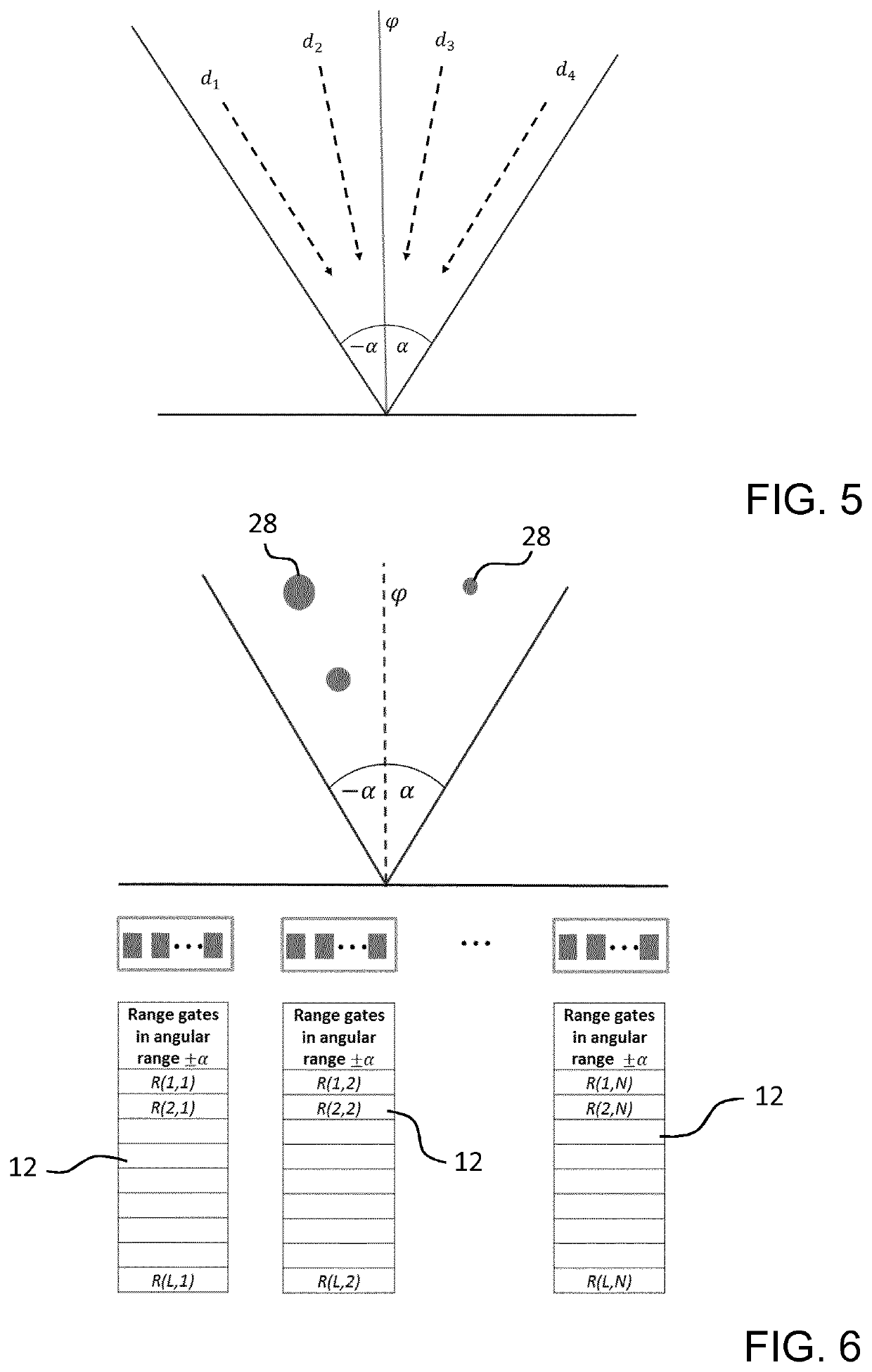Direction of arrival estimation for automotive spread radar systems
a spread radar and direction of arrival technology, applied in the direction of reradiation, measurement devices, instruments, etc., can solve problems such as ambiguity in angular reconstruction, and achieve the effect of fast modification of method steps and robust and reliable execution of methods
- Summary
- Abstract
- Description
- Claims
- Application Information
AI Technical Summary
Benefits of technology
Problems solved by technology
Method used
Image
Examples
Embodiment Construction
[0054]FIG. 1 shows a possible embodiment of an automotive spread radar system 10 for direction of arrival estimation of radar waves reflected by a target 28 in accordance with the invention. The automotive spread radar system 10 is installed in a vehicle 26 formed by a passenger car to provide information that is to be used as an input for a collision avoidance system of the vehicle 26. The automotive spread radar system 10 comprises a plurality of N=4 transceiver antenna units TRxk, k=1−N, that are arranged at a priori known positions at a front region of the vehicle 26.
[0055]FIG. 2 schematically illustrates the plurality of N=4 transceiver antenna units TRxk, k=1−N, of the automotive spread radar system 10 pursuant to FIG. 1. In FIG. 2, the transceiver antenna units TRxk are shown to be arranged at a priori known positions to form a one-dimensioned linear array 24, wherein the transceiver antenna units TRxk are evenly spaced by a distance d, for example 0.5 m. For reasons of simpl...
PUM
 Login to View More
Login to View More Abstract
Description
Claims
Application Information
 Login to View More
Login to View More - R&D
- Intellectual Property
- Life Sciences
- Materials
- Tech Scout
- Unparalleled Data Quality
- Higher Quality Content
- 60% Fewer Hallucinations
Browse by: Latest US Patents, China's latest patents, Technical Efficacy Thesaurus, Application Domain, Technology Topic, Popular Technical Reports.
© 2025 PatSnap. All rights reserved.Legal|Privacy policy|Modern Slavery Act Transparency Statement|Sitemap|About US| Contact US: help@patsnap.com



